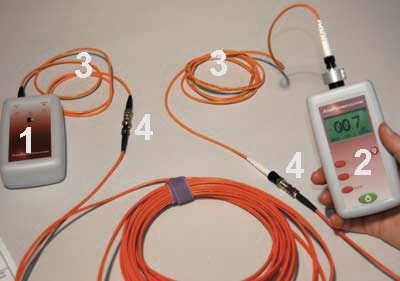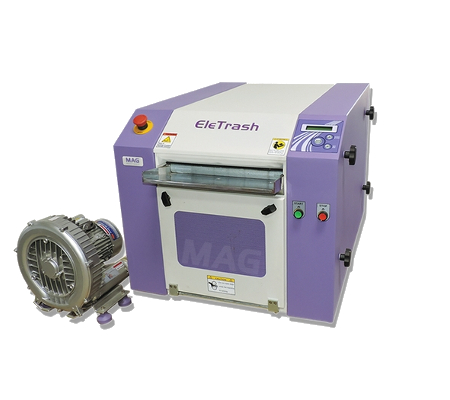A Comprehensive Overview to Optical Measurement System for Fiber Analysis
When it comes to fiber evaluation, recognizing optical dimension systems is crucial for reviewing performance and making certain quality. You'll check out crucial strategies like interferometry and spectroscopy, which aid you measure crucial criteria. But there's even more to it than simply these techniques; mastering attenuation measurement strategies can greatly affect your network's efficiency. As you navigate through this guide, you'll discover understandings that can change your strategy to fiber optics.
Understanding Optical Measurement Systems
When you discover optical measurement systems, you'll discover they're vital for examining fibers with precision. These systems use light to examine numerous attributes of fibers, including size, refractive index, and harmony. By employing techniques like interferometry and spectroscopy, you can gain useful understandings right into the fiber's properties.You'll find that these systems are made to lessen mistakes and enhance accuracy, making sure reliable information for your evaluation. Various configurations, such as single-mode and multi-mode systems, satisfy specific fiber kinds, enabling you to select the ideal suitable for your needs.Moreover, the assimilation of sophisticated software tools assists you analyze the information successfully, making it simpler to determine any disparities or problems. As you explore much deeper right into these dimension systems, you'll appreciate just how they simplify the logical process and boost the overall top quality of fiber manufacturing and screening.
Secret Specifications for Fiber Analysis
Secret parameters for fiber evaluation play a crucial duty in determining the high quality and performance of fiber optics. When you evaluate a fiber, you'll intend to concentrate on features such as depletion, data transfer, and modal diffusion. Attenuation determines the loss of signal toughness as light trips through the fiber. A reduced attenuation worth suggests far better high quality and longer transmission distances - fibre testing equipment.Bandwidth describes the data-carrying capacity of the fiber and is important for high-speed interaction. You'll require to analyze the bandwidth to guarantee it fulfills your application needs. Modal diffusion, which emerges from the various rates at which light trips through different modes in multimode fibers, influences signal clearness
Techniques for Depletion Measurement

Bandwidth and Its Effect on Performance
Comprehending data transfer is vital for enhancing fiber performance, as it straight affects the quantity of data that can be transmitted over a network. Greater transmission capacity implies you can send more details simultaneously, enabling faster communication and far better total performance. When you're collaborating with fiber optics, it's important to think about how bandwidth engages with fiber qualities, such as core dimension and material properties.If the transmission capacity is restricted, you may experience data loss or slower rates, impacting your applications. Furthermore, different sorts of fibers can support differing data transfer levels, so it's essential to pick the appropriate fiber for your certain needs.You should also maintain in mind that environmental variables, like temperature and external disturbance, can affect bandwidth. By understanding these elements, you can make enlightened try this site choices to enhance your fiber optic systems, making certain trusted and effective information transmission.
Refractive Index Measurement Methods

Overall Interior Reflection
Complete internal reflection (TIR) functions as a basic concept for measuring the refractive index of fibers. When light trips from a denser medium to a much less dense one, it can only be fully reflected if the angle of incidence goes beyond a particular threshold, referred to as the vital angle. This sensation permits you to figure out the refractive index by evaluating the angles at which light shows or refracts. By utilizing a configuration that directs light into a fiber and measures the resulting angles, you can calculate the refractive index accurately. Understanding TIR not only improves your fiber analysis but likewise improves the design and efficiency of optical systems. Leveraging TIR can lead to a lot more effective fiber-based applications.
Interferometric Methods
Building on the concepts of complete interior representation, interferometric strategies offer an effective ways for determining the refractive index of fibers with high precision. These methods make use of the interference patterns developed when light beam of lights split and recombine after taking a trip different paths. You can utilize setups like the Michelson or Mach-Zehnder interferometer to examine phase changes brought on by adjustments in refractive index. By thoroughly calibrating your system and evaluating the resulting fringes, you can figure out the refractive index with impressive accuracy. It's critical to maintain steady ecological problems to lessen errors. With these methods, you'll boost your understanding of fiber properties, causing far better efficiency in various applications, from telecommunications to sensing unit modern technology.
Modal Diffusion and Its Significance
Modal diffusion refers to the dispersing of light pulses as they travel via a fiber, which can affect the overall performance of the system. You'll see that this sensation can bring about signify distortion, influencing information transmission rates and high quality. Comprehending its importance is vital for enhancing fiber optic designs.
Interpretation of Modal Dispersion
In fiber optics communications, modal dispersion plays a substantial role in figuring out signal quality and transmission speed. It takes place when different light modes travel at differing rates with the fiber. Considering that each setting has distinctive paths and characteristics, they can get to the receiving end at various times. This time around distinction can bring about signal dispersing and distortion, which can break down the total efficiency of the interaction system. You may come across modal diffusion mostly in multimode fibers, where the several paths Our site of light aggravate the issue. Recognizing modal diffusion is necessary for optimizing fiber designs and making sure that your communication systems operate efficiently, preserving the honesty of the transmitted signals over longer distances.
Results on Fiber Performance
Comprehending modal diffusion assists highlight its impacts on fiber efficiency. This phenomenon happens when different settings of light travel at varying rates within the fiber, causing indicate dispersing with time. As you assess fiber optics, you'll notice that increased modal dispersion can considerably break down signal quality, causing reduced transmission capacity and longer transmission distances. In functional terms, this indicates your information can get here distorted or delayed, affecting general communication performance. To minimize these results, you could think about utilizing single-mode fibers, which minimize modal diffusion. By choosing the right fiber kind and comprehending how modal dispersion influences performance, you can enhance transmission top quality and guarantee trusted data transfer in your optical dimension systems.
Tools and Technologies for Optical Measurements
When it concerns optical dimensions, numerous cutting-edge devices and technologies go to your disposal to improve fiber evaluation. You'll find fiber optic testers, which examine signal high quality and efficiency, essential for keeping suitable network performance. Optical time-domain reflectometers (OTDRs) are critical for finding mistakes and determining loss over distances, providing comprehensive insights into fiber stability. Furthermore, spectrometers can assess light spectra, assisting you identify product residential properties and composition.Don' t neglect the value of imaging systems, like electronic microscopic lens, that enable you to aesthetically check fiber surfaces for issues. Likewise, consider making use of polarization analyzers to gauge tension and stress in fibers, which is vital for recognizing their behavior under different problems. By leveraging these devices and technologies, you can considerably enhance your fiber evaluation procedures, guaranteeing integrity and high efficiency in your optical networks.
Regularly Asked Inquiries
What Are the Prices Connected With Optical Measurement Equipments?
The expenses related to optical dimension systems can differ greatly. You'll need to evaluate tools prices, maintenance charges, software licenses, and possible training expenditures. Budgeting very carefully will aid you avoid unanticipated financial obstacles down the line.

How Commonly Should Fiber Analysis Be Executed?
You ought to carry out fiber analysis on a regular basis, usually every informative post six months or after significant adjustments in the setting (fibre testing equipment). This ensures excellent performance and aids recognize potential concerns before they affect your system's effectiveness and dependability
Can Optical Measurement Solutions Be Calibrated in the house?
Yes, you can adjust optical measurement systems in your home, but it needs precision. Make specific you adhere to the supplier's guidelines, make use of proper calibration standards, and ascertain your outcomes to assure precision in your measurements.
What Industries Frequently Utilize Optical Measurement Systems?
You'll locate optical measurement systems extensively made use of in industries such as telecommunications, production, health care, and study. They're essential for top quality control, fiber analysis, and making sure accurate dimensions in different applications, improving efficiency and accuracy across sectors.
Are There Any Security Worries With Optical Measurement Solutions?
Yes, there are security worry about optical dimension systems. You should constantly put on safety eyeglasses to protect your eyes from extreme lights and assurance appropriate training to handle devices securely and stay clear of accidents.
Comments on “The science behind fiber strength and durability through fiber measurement”